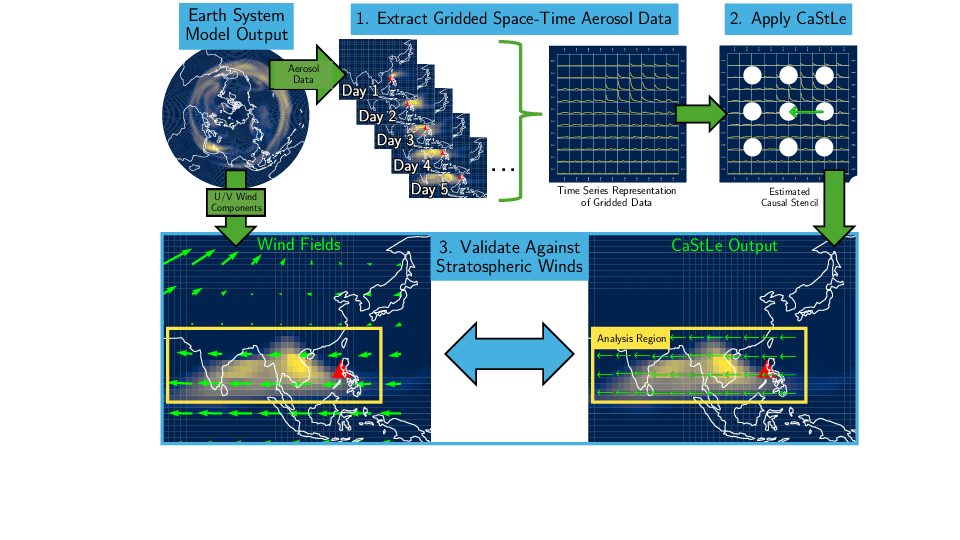Space-Time Causal Discovery in Climate Science: A Local Stencil Learning Approach
Abstract: Causal discovery tools enable scientists to infer meaningful relationships from observational data, spurring advances in fields as diverse as biology, economics, and climate science. Despite these successes, the application of causal discovery to space-time systems remains immensely challenging due to the high-dimensional nature of the data. For example, in climate sciences, modern observational temperature records over the past few decades regularly measure thousands of locations around the globe. To address these challenges, we introduce Causal Space-Time Stencil Learning (CaSTLe), a novel meta-algorithm for discovering causal structures in complex space-time systems. CaSTLe leverages regularities in local space-time dependencies to learn governing global dynamics. This local perspective eliminates spurious confounding and drastically reduces sample complexity, making space-time causal discovery practical and effective. For causal discovery, CaSTLe flexibly accepts any appropriately adapted time series causal discovery algorithm to recover local causal structures. These advances enable causal discovery of geophysical phenomena that were previously unapproachable, including non-periodic, transient phenomena such as volcanic eruption plumes. Regularities in local space-time dependencies are transformed into informative spatial replicates, which actually improves CaSTLe’s performance when applied to ever-larger spatial grids. We successfully apply CaSTLe to discover the atmospheric dynamics governing the climate response to the 1991 Mount Pinatubo volcanic eruption. We provide validation experiments to demonstrate the effectiveness of CaSTLe over existing causal-discovery frameworks on a range of geophysics-inspired benchmarks while identifying the method’s limitations and domains where its assumptions may not hold.
Publisher DOI: 10.1029/2024JH000546
Working Copy (ESS Open Archive): 10.22541/essoar.172253117.78663487
Summary: We introduce a new method for learning the dynamics of causal systems, that is, the physical rules that define a system’s behavior. While this task, causal discovery, is not new, existing tools are ill-suited for many large geophysics datasets. Current state-of-the-art approaches use statistical techniques to search for causal relationships between all aspects of a system, examining billions of possible causal effects, or simplifying the data by focusing on the most important variables. Instead of an exhaustive search or oversimplifying the data, we incorporate basic physical principles—requiring effects to be “local” and “uniform”—to massively simplify the causal discovery problem. We demonstrate that our approach can recover known geophysical dynamics by applying it to the 1991 Mt. Pinatubo eruption, validating its ability to uncover space-time causal structure from observational data.



Citation:
@ARTICLE{Nichol:2025,
AUTHOR="Jake J. Nichol and Michael Weylandt and G. Matthew Fricke and Melanie E. Moses and Diana L. Bull and Laura P. Swiler",
TITLE="Space-Time Causal Discovery in Climate Science: A Local Stencil Learning Approach",
YEAR=2025,
DOI={10.1029/2024JH000546},
JOURNAL="Journal of Geophysical Research: Machine Learning and Computation",
VOLUME=2,
NUMBER=3,
EPRINT="e2024JH000546"
}